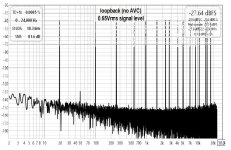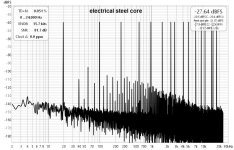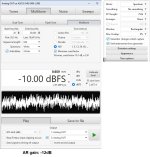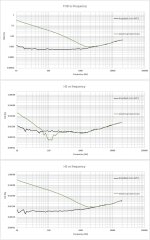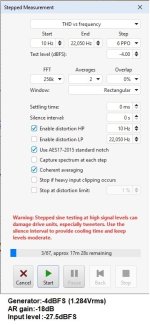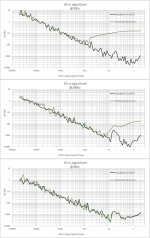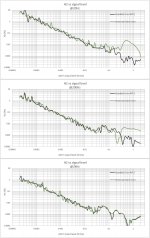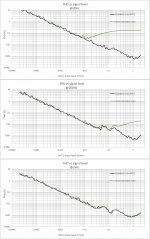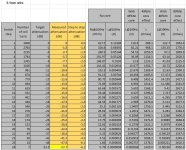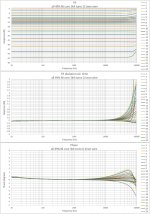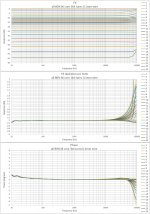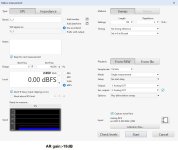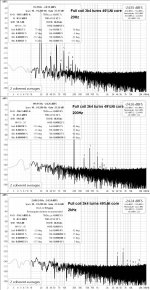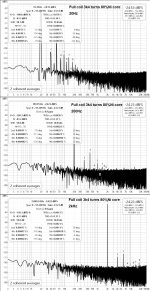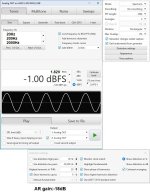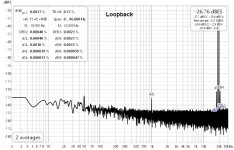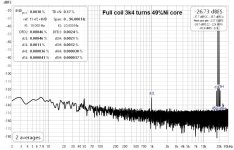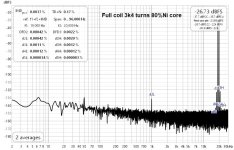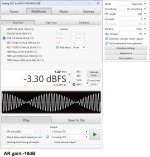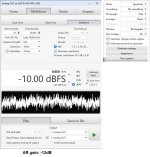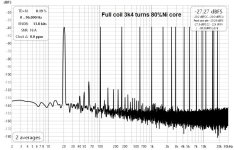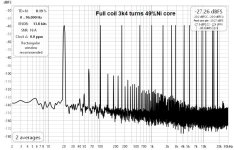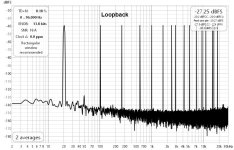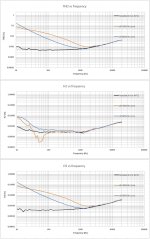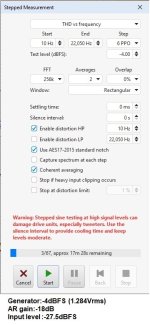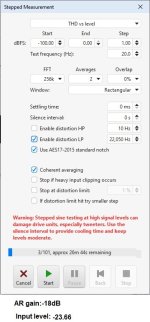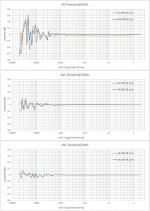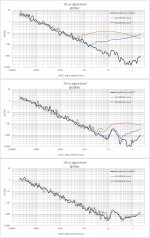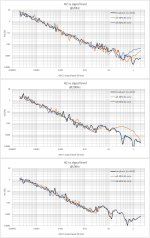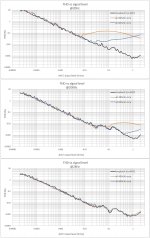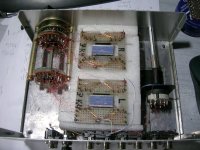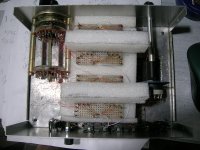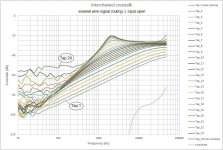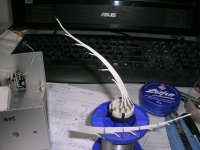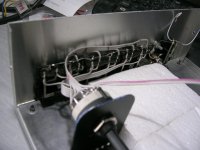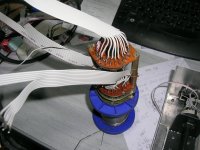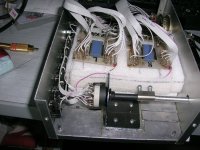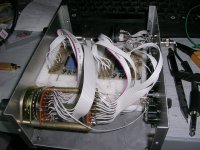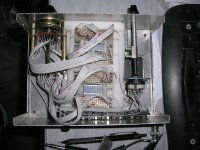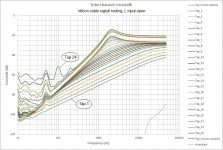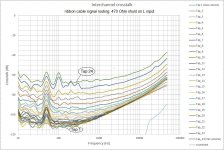The spare 80% ones I sent to George were NOS from a company that Townshend had bought the remaining stock and winding m/c's from when they went out of the transformer business. I dont know where they came fromThank you Guido. 🙂
I don't know of any source of Ni laminates.
Those I've used were donated by Zeta4. I think he mensioned sourcing them from USA.
George
edit: Here is one source from China
https://www.hongertech.com/ei-type-mu-metal-lamination-for-audio-transformer_p36.html
Data for EI24 core
https://www.hongertech.com/uploadfile/downloads/EI-24.pdf
and they were quite old but I think they were good quality. So its good to see what an excellent job has been done by George to use them. The 49% ones and the few new 80% ones came from a trade supplier in the US and have to be bought in bulk I'm afraid.
Sorry but I dont know of any DIY source but if I do come across one I will let it be known.
ps George, I think that's a good idea to increase the number of windings to 3K.
Hi Geoff
Thank you for replying.
In a week or so, I will have wound the 3k turns over the 80% Ni core. Measurements and listening impression will be posted.
Now attached is the last set of measurements of the 6k turns over the electrical steel core.
Distortion (and linearity) vs signal level at 20Hz, 200Hz, 2kHz
George
Thank you for replying.
In a week or so, I will have wound the 3k turns over the 80% Ni core. Measurements and listening impression will be posted.
Now attached is the last set of measurements of the 6k turns over the electrical steel core.
Distortion (and linearity) vs signal level at 20Hz, 200Hz, 2kHz
George
Attachments
Hi Bonsai, thanks for chiming in.
As far as those measurements go, indeed the electrical steel core shows good results.
I had a telephone talk with member 'Magic Bus' who has the electrical steel core AVCs for listening tests.
He described to me what he considers as a strange behaviour of them: When the music makes changes in dynamics, these AVCs seem like holding a memory and being unable to let music die out naturaly (lack of music tails).
I 've heard them only while doing casual listening, where I find they are doing very well.
I haven't auditioned them in detail and when I do, I may be unable to notice nuances.
But in the near future I will try to technically investigate further what Kostas has noticed with this core.
Yesterday I received the 0.1mm magnet wire and the priority is to wind the smaller E-I 25 bobbins for the Ni core with some 3k turns.
Measurements will follow soon
George
As far as those measurements go, indeed the electrical steel core shows good results.
I had a telephone talk with member 'Magic Bus' who has the electrical steel core AVCs for listening tests.
He described to me what he considers as a strange behaviour of them: When the music makes changes in dynamics, these AVCs seem like holding a memory and being unable to let music die out naturaly (lack of music tails).
I 've heard them only while doing casual listening, where I find they are doing very well.
I haven't auditioned them in detail and when I do, I may be unable to notice nuances.
But in the near future I will try to technically investigate further what Kostas has noticed with this core.
Yesterday I received the 0.1mm magnet wire and the priority is to wind the smaller E-I 25 bobbins for the Ni core with some 3k turns.
Measurements will follow soon
George
I had to read this a few times 🤔 , it’s turns and Tesla. We need an SI unit for turns should be the Abra.only 38T are needed to keep below 1T.
Like a compressor effect or something. Impressive in the beginning, I had to listen to it again and again to realize it makes all peaks -of whatever absolute level- to sound aggressive.When the music makes changes in dynamics, these AVCs seem like holding a memory and being unable to let music die out naturaly (lack of music tails).
Here are the measurements of an AVCs wound with 0.1mm wire.
3k4 turns over EI-25 cores.
First, winding details, steps of attenuation and inductance measurements (DE-5000 LCR meter)
Air core, with 49%Ni core lams and with 80%Ni core lams
George
3k4 turns over EI-25 cores.
First, winding details, steps of attenuation and inductance measurements (DE-5000 LCR meter)
Air core, with 49%Ni core lams and with 80%Ni core lams
George
Attachments
Last edited:
Frequency response.
For this and the following tests, Rsource=500 Ohm Rload=20kOhm (Jan Didden Autoranger in Hold mode)
One set of measurements with 49%Ni core lams and an other set with 80%Ni core lams
For this and the following tests, Rsource=500 Ohm Rload=20kOhm (Jan Didden Autoranger in Hold mode)
One set of measurements with 49%Ni core lams and an other set with 80%Ni core lams
Attachments
Last edited:
Two such bobbins (3k4 turns of 0.1 wire) with 80% Ni core have been housed in an enclosure.
I only did a functional test and 10 minutes of listening.
Now they are at the hands of courageous 😉 member Magic Bus for listening tests
George
I only did a functional test and 10 minutes of listening.
Now they are at the hands of courageous 😉 member Magic Bus for listening tests
George
Attachments
I suspected the enamel wiring spaggeti for the cross talk.
I decided to do a rewiring, this time with ribbon wire.
Much neater lay-out and easy with troubleshooting.
George
I decided to do a rewiring, this time with ribbon wire.
Much neater lay-out and easy with troubleshooting.
George
Attachments
Well, that was a puzzle.
I started thinking if I was measuring in a wrong way. Why do I leave the L ch input open?
In normal usage, both inputs are connected to a signal source which has a certain output resistance Ro, say 500 Ohm.
What will hapen with the interchannel crosstalk if I shunt the L ch input with a similar resistance?
I did the measurement.
L ch input driven, 470 Ohm shunt on R ch input.
I started thinking if I was measuring in a wrong way. Why do I leave the L ch input open?
In normal usage, both inputs are connected to a signal source which has a certain output resistance Ro, say 500 Ohm.
What will hapen with the interchannel crosstalk if I shunt the L ch input with a similar resistance?
I did the measurement.
L ch input driven, 470 Ohm shunt on R ch input.
Attachments
- Home
- Source & Line
- Analog Line Level
- Any chance for a diy autoformer volume control?
